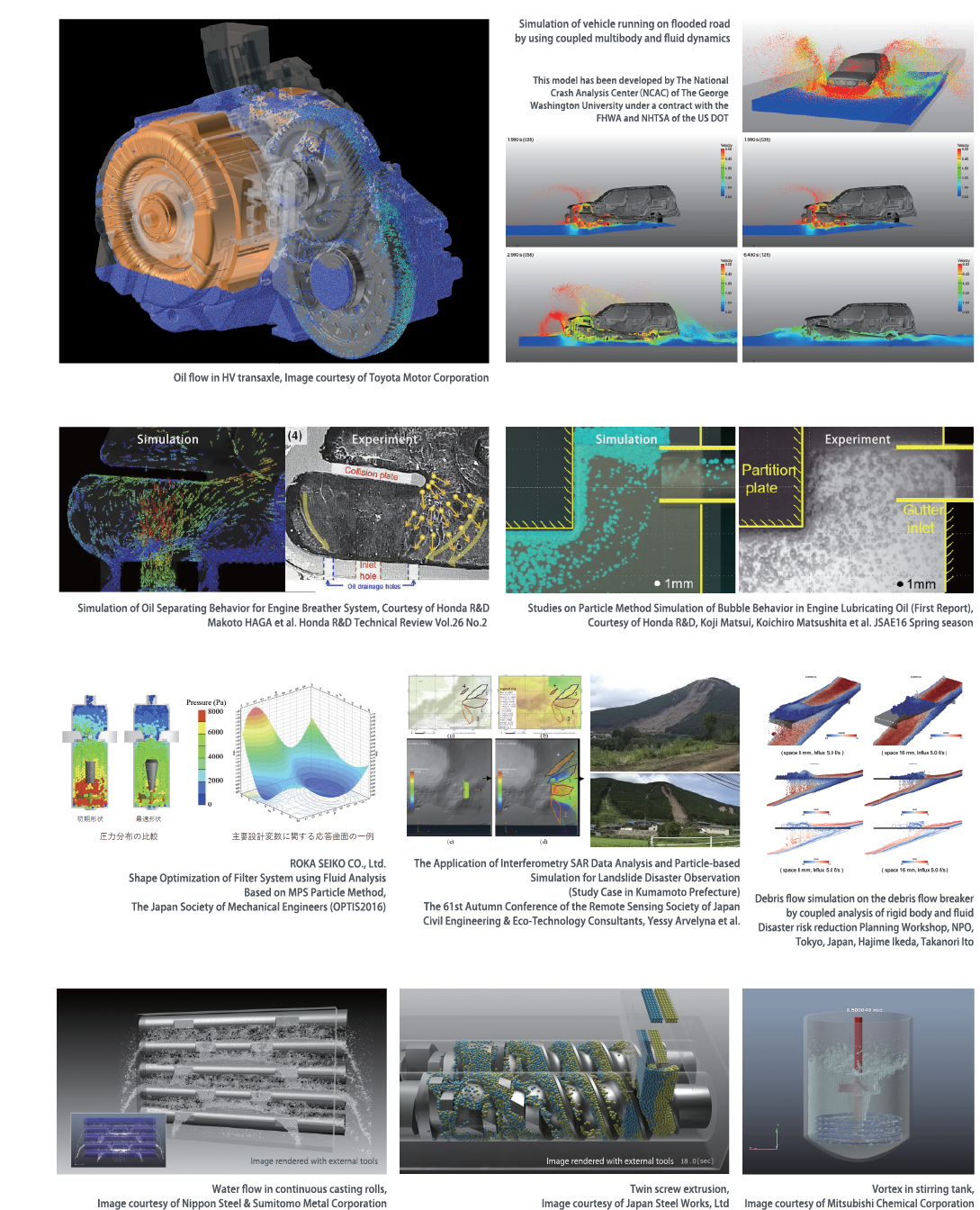Introducing Particleworks - CFD Analysis Software using Particle Method
Because Computational Fluid Dynamic Analysis does not always require mesh creation
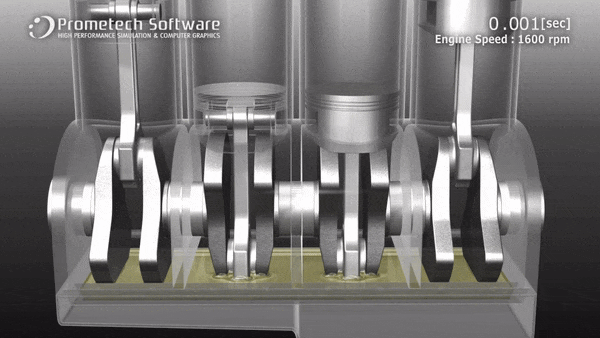
Particleworks is the leading CFD analysis software for simulating the movement of fluids. Our cutting-edge, particle-based simulator makes it easy to create and analyze 3D models in a variety of industrial contexts ‒ from oil sloshing and cooling for the automotive industry to mixing and kneading for medicine and plastics.
See the Webinar - How Meritor Uses Particleworks
With an intuitive interface, an ultra-fast solver, and powerful visualization tools, Particleworks CFD analysis software gives you all the tools you need to analyze motion in order to optimize your engineering process.
Splash and Free-Surface Flow
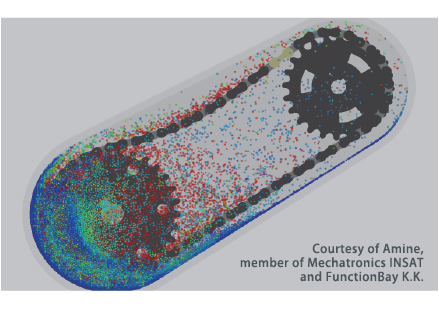
Particleworks analyzes the motion of fluids by dividing them into sets of discrete elements or particles, which are allowed to move freely. This approach lets you simulate large deformation, coalescence and segmentation of fluid, and rapid change of flow ‒ without requiring any complicated preparation or meshing in advance.
Excellent performance is in the simulation of moving boundary problems, which can be a time-consuming task with conventional methods. When dealing with complex structures such as gears and impellers, the software first translates these structures to polygon models, making it simple to apply detailed movement settings.
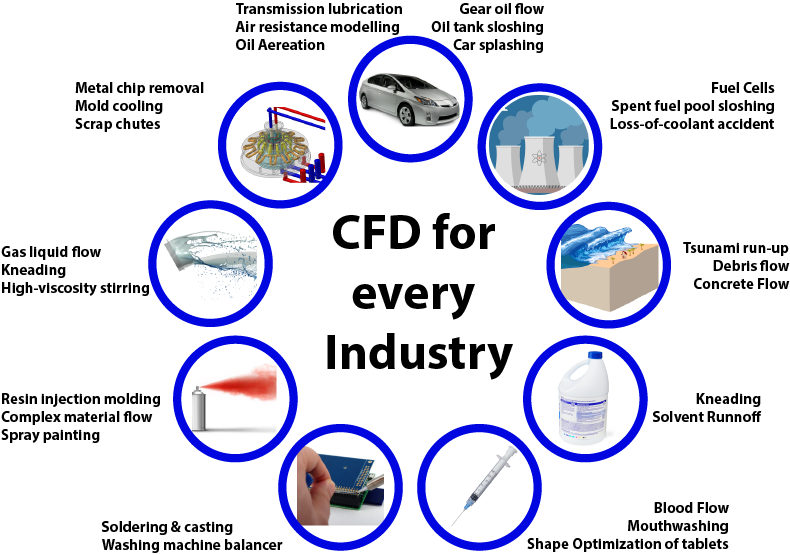
"This means, the Particleworks results tended to be the same as the FVM high-resolution ones... Particleworks has the same result as FVM and the calculation time is about 1/5" - Yuki Takahashi, Technology Development Division - Hitachi
Modeling to Post-Processing in 4 Steps

No Meshing Needed
Particleworks lets you import files directly from CAD software, so you can avoid the expensive mesh generation needed for conventional CFD analysis software.

Based on Decades of Research

Particleworks utilizes the latest research by Dr . Seiichi Koshizuka of the University of Tokyo’s Graduate School of Engineering, developer of the MPS method and founder of Prometech Software. Since 2009, it has offered engineers innovative solutions to a wide range of industrial problems. Today, Particleworks continues to gain new simulation capabilities through research conducted within companies and university laboratories across Japan.
Flexible Multi-Body Integration
Particleworks makes it easy to simulate interactions between fluids and powders, or between fluids and rigid bodies, with no complicated settings required. You can even carry out coupled simulations with Particleworks and third-party software, with no need for meshing.
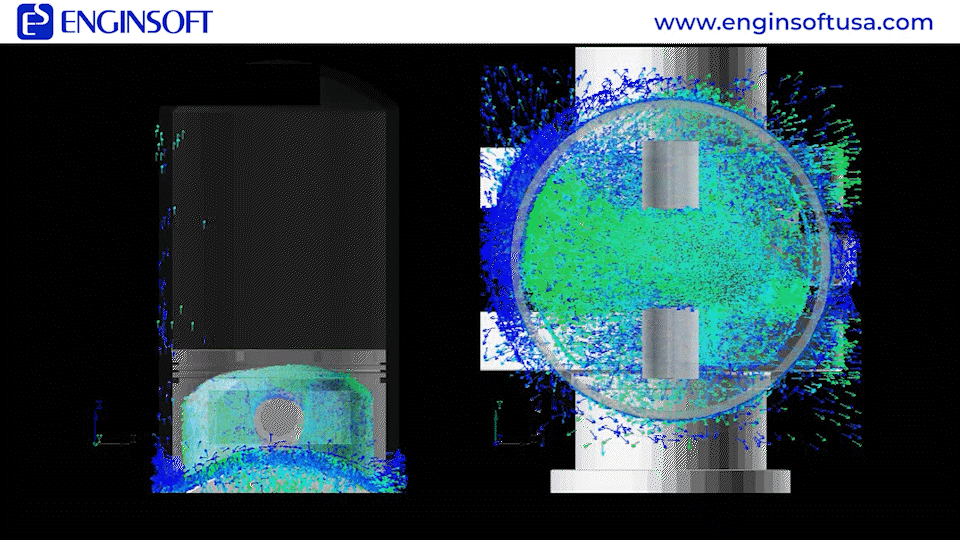
Accelerated Simulation Supporting Today’s Latest Hardware
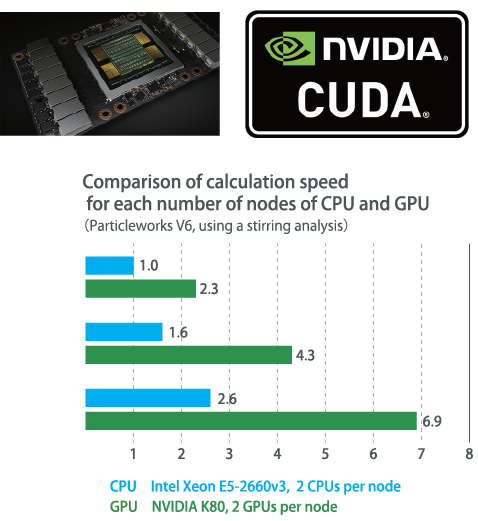
Particleworks makes the most of the latest hardware environments, supporting multithreading (OpenMP) and multiprocessing (MPI), in addition to SSE/AVX instructions on CPUs.
NVIDIA CUDA Support
Particleworks has been recognized by NVIDIA as a program that harnesses the power of NVIDIA’s CUDA, a GPU parallel-computing platform and application-programming model that offers overwhelming performance gains in parallel computing. Particleworks supports NVIDIA’s Pascal™ architecture, which can run up to three times faster than NVIDIA’s earlier Maxwell™ architecture. Leveraging the latest GPU technology, Version 6 runs significantly faster than earlier versions of Particleworks, enabling large-scale simulation with tens of millions of particles.
Enhanced Support for External Tools
Particleworks can now export result data to external tools such as NX Nastran, ANSYS and Abaqus. Time-series data regarding physical quantities on each particle can be exported to CSV file s, and then converted to various data formats such as NX Nastran PLOAD4.

Supports RecurDyn (Multi-Body Dynamics Software)
RecurDyn has an interface for Particleworks specially designed for co-simulation of dynamics of rigid bodies and fluids. This interface allows you to simulate complicated fluid-solid interactions.
Exporting Heat Convection Coefficients
Using flow data of particles, Particleworks can now export heat convection coefficients, which can be applied to analyze the cooling of cylinder heads, motors, or sheet steel. This function uses the heat transfer coefficient to model the heat flux to the wall, and then it estimates the heat removal (heating) amount of the polygon wall surface. You can simulate cases where the temperature of the fluid is constant and a boundary layer exists. You can:
- Simulate and analyze the cooling of engine oil by a piston
- Simulate and analyze the cooling of steel
- Calculate heat convection coefficients using velocities
- Analyze oil flow with heat transfer

Improved Air Resistance
Version 6.1 also offers increased compatibility with external airflow-analysis programs, offering improved analysis of droplet behaviors such as mist and spray. You can:
- Simulate gas-liquid separations for breather systems
- Create simulations in which each particle represents a group of droplets
- Calculate drag coefficients based on a wide variety of applications
- Analyze filtered particles and pathlines
- Predict oil-separation processes
Examples
